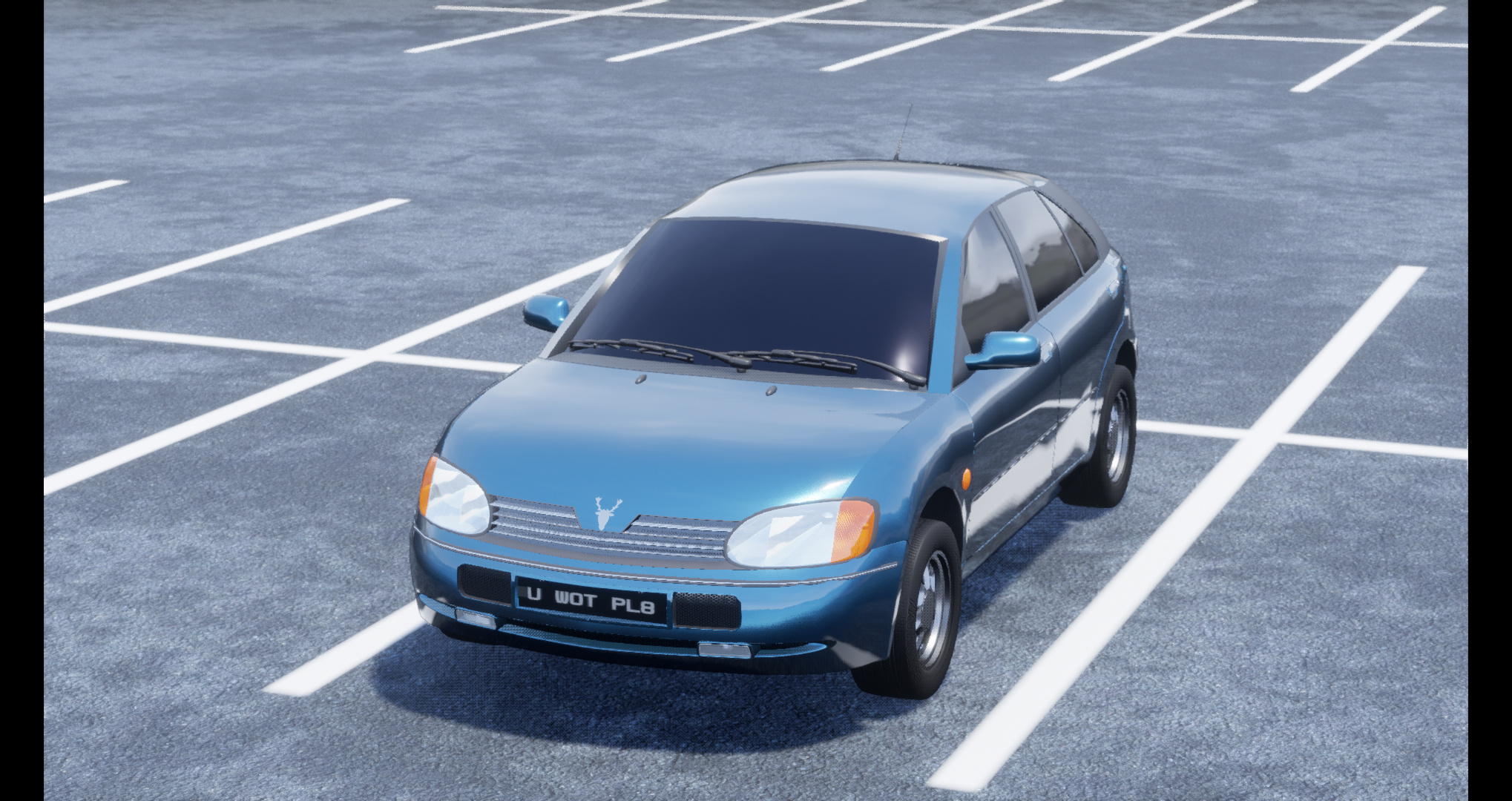Sneak Peek into the future II: 2015.
It appears that the legend has caught on…
… And so has the racing heritage.
… I mean, if the World Series Touring ends up being a thing, at least.
It appears that the legend has caught on…
… And so has the racing heritage.
… I mean, if the World Series Touring ends up being a thing, at least.
Loving the series. With the new BeamNG exporter around the corner, are you gonna make some of these cars available to download? I’d love to try the Mesaia 154S 
Q
Definetly. Not literally two minutes after the exporter release of course, but definetly.
First one I’m gonna do is the Tetra and the Tour De Corse (and in fact the exporter is gonna be a blessing to tune the Group B version properly as Automation doesn’t really have a “hooning on gravel” stat), and then it’s gonna trickle down all the way to the 154S. x)
Oh and also, it appears that the post about the FAAL Tetra was a mistake, and the 256R engine family actually doesn’t exist. I don’t know why, but the archives state of a weird inline 6 setup when it’s actually a shorter stroke inline 5 for the whole post 1983 lineup. brb gonna slap some archivist trainee.
[EDIT]
Old picture of a Mesaia 164S in a late sixties track day, colorized
spicy
But first, a little overview of a few models we didn’t mention before:
By the end of the 70s and beginning of the 80s, the competition amongst compact hatchbacks grew stronger and stronger, on all fronts: From the shitbox to the high end posh trims all the way to the pocket rockets, every single brand was trying to one up the other. Turbos, double overhead cams, fancy suspension setups, you name it. FAAL took on the fight with confidence, feeling that the Mesaia, their competitor in that segment, was still avantgarde enough to keep on going another decade with just a refresh.
And, there’s the refresh:
Simple, but efficient. As for the trims, every single engine stayed the same (in the regular offer), except with fuel injection.
-the 1.1 BL becomes 1.1 BLi and gains 8hp with the updated 54hp 133S11Spi
The BLi was 4 speed only. The CLi was 4 speed with optional 5 speed. The GLi was 5 speed with optional 3 speed automatic. All around, better performance, better response, and better fuel economy. The interior has been revised, too, seeing the light of brand new cassette players and even ABS on the posh, wool seated GLi.
But the fun ain’t there. Oh no.
It was designed for fuel injection from the start. It liked to rev much more than the now 17 years old 184S blocks. And it had so much to prove. Its first iteration (along a tamer 2.0L we’ll talk about in another post) was the 204R16Mpi in the 1982 Mesaia 1.6 GTI2.
At 115hp and 145nm of torque, it was largely sufficient for the light Mesaia, who at 915kg didn’t have the beer belly problems that some other hot hatchs were starting to have. Looking at you, mk2 Golf. In fact, with a 0-100km/h time of 8.6s, a quarter mile of 16.4s, and a standing km of 30.3s, it was better than a mk2 Golf GTI 8V all around.
But even beyond stats, the car was delightfully throwable around corners, the rear wheel on the inside poking off the road whenever your drivers skill get good enough for it to happen. It seemed, though, that FAAL believed more than the public in a true, sports only car, because the radio was optional and almost everybody bought it.
But the competition kept growing. Every single brand was making better versions of their hot hatches, sold alongside the now lesser versions. Fiesta xr2i? How about a Turbo. 205 GTI 1.6L? Yeah okay but 1.9L. Mk2 Golf GTI 8V? mmmm 16V.
Thankfully, FAAL engineered their new baby with that in mind, and the 1.6 GTI2 became the “lesser GTI” in 1985 with the arrival of the 1.8 GTI:
The car gained 20hp and 30kg, now standing at 135hp and 945kg with the new 204R18Mpi engine. The radio was now standard, but that didn’t make performances worse, oh no.
The 0-100 was now 7.74s, quarter mile 15.78s, and standing km 28.95s. Top speed was still nothing quite impressive at 191km/h, but the mk2 Golf GTI16 was once again trump’d by half a second in almost all the other stats. That battle of numbers still didn’t make the Mesaia 1.8GTI any worse to drive, following the path of her 1.6 little sister it was praised for its incredible handling.
The Mesaia III, with that refresh, was bound to stay into FAAL’s lineup until the end of the 80s. So did the Coupe, and so did the Ochlosia. That leaves two cars left:
The designers, of course, were aware of that, and replacements are in the pipes for the next posts.
Yep, pretty early for an update, but some markets do need updates if you want to keep them interested. It is the case for sedans and high end cars. 1982, it’s time to sleeken the Foreia.
… No, wait. Let’s do even more.
As you might have noticed from all the effort put in their sports cars, FAAL was really interested in competition. That would result in customers expecting cars to handle like sports cars, or at least have the possibility to do so. And as they were drowning in money and potential money from having more models for sale than ever, it was time to dump something in suspension R&D. Which is why the Foreia features a brand new, very fancy double wishbone all around suspension setup. Boom.
Speaking of trims and engine choices:
Foreia :
Foreia GL:
One year after launch, the Klinos saw the same overhaul as the Foreia, and for the same reason: It was still based off of it.
This boi is only motorized by 5 cylinder engines, and the car retains the fancy double wishbone all around suspension setup, but connects it to the car on FAAL’s trademark high end hydropneumatic suspension, which makes for an incredibly comfy ride, especially with the optional 4 speed automatic. And especially with all the goodies and the interior build quality of the return of the grandaddy of all FAAL luxury cars: The Klinos Excellence.
The most expensive FAAL ever built. But hey, it had everything. Cassette 8 speaker radio, wood trim, heated power operated wool seats… But hey, that’s for the trims and engines part:
Klinos GLS
Klinos Excellence
Now of course, FAAL kinda lost some money on this much development, which is the reason between them keeping up the Mk2 Plebia (WHICH IS ALREADY 27 GODDAMN YEARS OLD) for another three years, unable to industrialize the otherwise ready replacement yet.
So yeah, next up, Granny retires: The Mk3 Plebia.
Back from classes and I see this… 
Five pot + AWD + hydro. GIB 
Morning shifts are eating me up so small post today to tease for a bigger post probably this weekend
By 1981, the Plebia II had been on sale for 26 years. That’s a pretty damn long carreer, even by European popular car standards. Sure, it has gone through two facelifts but stayed on the same platform, desperately lacking modern tech and modern design features. It had the crappiest aerodynamics of any car on the market (that included the 2CV and the Renault 4, which were amongst its only equivalents at the time), and desperately lacked a hatch. A replacement had to happen really soon, or FAAL would lose the cheap popular car market.
A replacement was in the tubes, being developped for a few years. But by the early eighties FAAL was fully focused on rallying and other competitions and was lacking the funds to replace the Plebia, dumping money in the Tetra project and its double wishbone suspension instead.
However, to prove that a replacement was, indeed, in the tubes, and spark the public’s interest, FAAL put every single idea they had so far into a concept car that was going to premiere at the 1981 Geneva Motor Show: The FAAL Dima.
The idea was simple: As much space as possible contained into a car barely 37cm longer than the outgoing Plebia. Abie to seat 5, still carry at least one standard suitcase, while being as aerodynamic as possible. And the result behind this idea looked like a blobby shape wrapped around a square cockpit.
The wheels were as flat as possible for maximum smoothness, the wheel arches were flat for the same purpose. The bonnet though, was swooping from the bumper to the windshield to the point where the link between the two was barely noticeable for a 1980s car.
The front was very bare, simple yet modern headlights and the most bottom breathers of bottom breathers. As few fixtures as possible to ensure as little drag as possible. In fact, the air flow on the front was very clever: The bottom breather grille was meant for the radiator. And there was a hidden grille at the top of what happenned to just be a crevice in between the two headlights where cold air could come in to cool down the rest of the engine bay, before exiting through the two triple vents in front of the windshield. This was supposed to provide cooling with as little resistance as possible, but of course, was still in testing.
The rear was pretty simple. Not much going on in here except for the boot opening to rear surface ratio was amongst the biggest of any car on the market and of course any FAAL ever.
It would take four more years for the actual Plebia III to be production ready and hit the market. Although, it was going to be a bit different from the concept, because of corporate decisions and cost cutting.
Aw shit it’s that time again where I have a billion things to release. Hmpf.
It has been expected.
It has been hoped for.
It has been postponed. Many times. Because FAAL had other priorities, and wanted to up their prestige, mainly. Which is why the idea of creating an entry level car was not really welcome in the design office.
…
However, the idea of finally retiring the prehistoric Mk2 Plebia from the market was definetly welcomed. So, the 1981 FAAL Dima concept has been, four years later, industrialized.
How you see her during date night:
How she looks the morning after:
Now of course, to be production ready, the concept had to be made a little simpler.
Round headlights have been kept as a design cue reminiscing the old Mk2 Plebia. Because, after all, the car had a special place in FAAL’s history, being produced for thirty years, non stop. The upper engine airflow knife has been removed, and so has the bubble shaped hood in the process. Bigger blinkers have been fitted inside the bumper, and only one of the windshield air vents remained, as a HVAC air intake. And despite everything, despite the reminiscing design cues, despite the four years debate between the FAAL executives, the car did not retain the Plebia name. At the last minute, it was renamed Dima, just like the concept it came from.
The “regular” Dima was available with a three engine range, all from the 133S inline 3 series that moved the base model Mesaia, as well as the outgoing Plebia Mk2. To save costs, gearboxes were reduced to three: A 4 speed manual, a 5 speed manual and a 3 speed automatic.
Depending on trim, options and engines, the weight ranged from 715kg to 930kg. Oh yeah, speaking of trims:
But of course, the lineup wouldn’t be complete without not one, but TWO sporty variants.
Now, for the sport offering, the Dima keeps on the “today’s sport engine is tomorrow’s efficient engine” motto started by the Mk2 Mesaia and Foreia. Cue the 133R engine range, which is basicaly a SOHC-4 head slammed onto a 133S block, only available in multipoint injection, and with different internals.
Now why downgrading the engine size? Well… for once, because FAAL didn’t want to cast a shadow on their own Mesaia GTI 1.6, which base price was around 69.660 francs without options. But also, that engine size made it fit the Group N3 rallye category, allowing amateur drivers to go after BMW 320is and other 2000cc N/A engines in the mountain passes in a car that barely weighed 777kg when stripped down, and that had factory approved aftermarket kits that could make the power go up to 184hp!
That, though, is for a whole other topic.
Okay so it turns out with a bit of imagination, you can make pretty decent pseudo-diesels in Automation. And what is a French brand without diesels?
So. It all started in 1964, and the testbed was the very last model year of the first generation Mesaia.
The engine was a new block. They tried to dieselify the existing 154P15 engine, but every attempt ended up a reliability failure, as the head would basically fly the hell off after a few hours of testing. So, a new engine block had to be made.
Introducing the new 194P engine series. A long stroke pushrod 4 cylinder fitted with strong internals made to cope with the bonkers 22.5:1 compression of the diesel engine. It had a newly developed indirect injection system with pre-combustion chambers. And the first iteration of the engine was the 194P19D, making 49hp and a little more than 100nm of torque.
Now, people at that time weren’t used to diesel engines in regular passenger cars, and the Mesaia 19D had a mixed welcome. If diesel fuel was considerably cheaper than petrol, the car itself was noisy and pretty damn shaky. But since performance was about on par with its carburated counterparts (18.9s 0-100, 125kph) with fuel economy being way better, some people were willing to cope with the constant ticking and shaking and the car found its buyer demographic.
FAAL then decided to continue the adventure with the Mk2 Mesaia. From 1965 to 1972, with the same 49hp engine, in the second iteration of the 19D. An updated four speed gearbox and the MK2’s better aerodynamics meant for better perfs despite 20kg more (18.1s, 128kph).
… The problem, though, is when they attempted to sell the same engine in the Foreia. With a car 150kg heavier and the size of the sedan that it was, not to mention the power loss of the FR drivetrain with the little power having to travel through a long, heavy driveshaft, performance was risible. 20.7s 0-100, 130kmh top speed. Thank god the engine was only sold with the base trim.
By 1970, thankfully, this problem was solved with the arrival of a new engine family: The 255P. A 2.5L pushrod five cylinder engine fitted with the same indirect injection system and with the same compression ratio. The all new 255P25D engine was good for 69hp and in the Foreia, a 16.9s 0-100 and 146km/h top speed. once again, performance was on par with its carburated counterparts and fuel economy way better. The balance has been restored.
If this engine was offered on the higher trims, an updated version of the 194P boasting 56hp, the 194P19D2, replaced the 49hp base unit on the base model for the 1972-1974 model years.
The same 56hp unit found its way in the 1972-1975 Mesaia II 19D, before keeping on going in the 1974-1982 base model Foreia III, where the perfs were 18.1s and 137km/h. If that sounds risible, it was about the same perfs as a contemporary Peugeot 504 GLD. Cheaper fuel, bonkers fuel economy, improvement in sound deadening and vibration cancellation over the years and especially the fuel crisis made it a pretty good seller amongst its carburated counterparts.
As for the Mk3 Mesaia, getting smaller and lighter, it got a new derivative of the 194P engine, the 194P15D. A 1.5L unit boasting 49hp and taking the cheap lil’ thing to 100km/h in 18.8s and to a top speed of 130km/h (press car with options base model might be faster :t)
Rich people got an updated 2.5L fiver 255P25D2 with 79hp by 1976 for the Klinos. The same unit found its way in the Ochlosia 2.5D because towing capacity. Even richer people got the very first turbo diesel FAAL engine, because they are better than everyone else. The Klinos GLSdt boasted 97hp out of its 255P25TD, propelling it to 100km/h in 12.1s and to a 175km/h top speed, all while getting 9.8L/100.
For 1982, the brand new Foreia IV got herself the latest update of the 194P, the 194P19D3, getting 65hp for the base model, and yet another turbo engine, the 194P19TD, good for 86hp, 7.5L/100, 11.8s 0-100 and 158km/h. Now the numbers are starting to get interesting, and salesmen feel that. That’s why the turbo engine is available from the CL trim and not just a high end option.
Still in 1982, the same logic applies to the lil’ Mesaia. Updated 194P15D2 53hp N/A engine and yet another turbo unit, the 194P15TD, with 70hp. The turbo engine was also available from the CL trim, and on a new, experimental trim, the GTD. GTI visuals and sporty-ish suspension wrapping the peachy, yet still economical unit that blessed the car with a 154km/h top speed, 12.5s 0-100 and fuel economy of 6.5L/100.
This was a very interesting trim, which is exactly why I’m presenting a CL instead. :t
AAAAAAAND again in 1982 since FAAL oftens update its things by batches, the Klinos II kept the same N/A engine, but the turbo one got an upgrade with the 255P25TD2 and its 116hp. Performance was sensibly the same than the last generation Klinos, though, but the car was also considerably heavier (1460kg).
Okay. Now we’re up to date for the 1987 batch of facelifts and new models that’s gonna come. Sorry for the long post
Okay we’re back.
By the second half of the 80s, the Ochlosia was starting to show signs of being outdated. Too boxy. Too small for the evergrowing van market. But what made FAAL take the decision of replacing it was the recently booming minivan market.
Chrysler. Renault. Both of them found the pot of gold at the end of the rainbow with the Caravan and the Espace, and were rolling on sales. This was unacceptable. FAAL had to do something, and despite attempting to boost the sales of the Ochlosia Camper as one of them, people didn’t buy it. At the end of the day it was a van, and lacked the practicality and comfort of its competitors.
So. A van, to get back on the rails on the utilitarian market? Or a minivan, to try and get a share of magic? Both, my dudes. Both.
By 1985, FAAL decided to take on the development of an actual minivan, all while still producing the Mk1 Ochlosia. And also called for a partnership to build an actual new van, which was gonna end up being the PUCV.
While the PUCV project took five years to get released, the Mk2 Ochlosia saw the light of day, after much teasing, in 1988, arboring the new grille design first adopted on the 1987 Foreia facelift.
…
This seat combo has been arranged to be able to make a bed out of the second and third row of seats, the two of them folded flat with the backrests at 180°.
TETRA AWD was an option on both 2.5L gas and diesel engines, and there were only two trims:
… but you aren’t listening to any of that because it seems like the cat is out of the box already. So I’m gonna talk about the elephant in the room: Yes, it has asymmetric mirrors.
Because of the unusual shape of the minivan, there were two gargantuan front quarter windows that were two third the size of the front door windows. And That gave FAAL an opportunity to cheat a little to get better visibility. Which is why the driver mirror is on the door, in order not to be hidden by the door pillar…
Oh yeah and since we’re talking about quirks and features, here’s some retractable roof bars.
The Mk2 Ochlosia was a very welcomed asset in FAAL’s ever growing lineup. As it turns out, the 1980s were a time when you could create cars that followed a trend, and they’d still turn out to serve an actual purpose other than keeping up with the times not like those GOD DAMN CROSSOVERS AAHGIRJKSEFVOI
… Hem.
Next up, the death of the Coupe and entering the nineties.
And in fact, let’s start with the sad goodbyes.
The FAAL Coupe got its glory days in 1984-1986, 6 years after its release. The 400+hp Group B beasts were tearing the gravel apart along with all the other mean machines, gaining people’s hearts in the process. Rallying was great. Sales of the Coupe were great. In fact, by 1985 they were even better, as the car was now offered with four engines: The 135hp 1.8L mesaia GTI engine which ended up being the only 4 cylinder Coupe, a 160hp updated version of the 2.5L inline 5, plus the 180hp turbo inline 5, and finally the Tetra evo 3 and its individual throttle bodies and 215hp. The more the Tetra won Group B races, the more people bought Coupes and Tetras. Everything was going well…
And then Group B died.
As a result, thousands of people who bought Coupes for the image without pushing them ever, suddenly found out what this car was all about, I say with the most sarcastic tone ever. Deemed unstable and dangerous by people who drove it shifting at 3000rpm and driving at the speed limit, the FAAL Coupe saw its sales drop month after month for the entirety of 1987. The car was due for a second and final facelift in 1988 including the new FAAL front fascia, with a final version of the Tetra, the Evo 4, that was meant to keep going until the nineties. After the tragedy, none of this happenned.
…
Almost.
There were only going to be one thousand Tetra evo 4s. No more. And only 250 of those were going to be Tetra Blue. Which is why FAAL enthusiasts almost threw a riot when they discovered that the star car featured in The Agile & The Angry (2001) was one of them Tetra Blue evo 4s, and not just a regular Coupe. Granted, it was a salvage title imported illegally in the US… But still.
One emotional goodbye later, the FAAL Coupe left the lineup by november of 1988, without any replacement.
Now the good news: By 1988, FAAL decided to make use of them spare Group B engines in another form of motorsports, to try and boost their sales in the USA: the Trans-Am…

… racing series.
Yup, rules allowed that, apparently. despite everybody at that time using V8s and RWD, FAAL came in strutting around with their 650hp 2.1L turbo inline 5 and AWD, all wrapped in a mean looking facelifted Foreia:
One last thing happenned in 1988, and that is the release of two concept cars at the Mondial de l’Automobile in Paris, the first of them to actually be called Mondial de l’Automobile instead of Salon de l’Automobile.
While the entirety of the FAAL lineup at that time were square bois, the competition was starting to round up in prevision of the Blob Era of the nineties. And here comes FAAL, presenting their brand new production ready Mk2 Ochlosia, which was square… and two blobby concept cars: The Stemma and the Tasia.
The Tasia was meant to showcase a replacement for the aging Mk3 Mesaia. It was essentially drawn with a compass, every single line being round except for the taillights that had to meet with the hatch and therefore couldn’t be fully round.
And they proved it twice, too:
But there’s two more years of dumping money into R&D until you can see that, though. Coming next, the Mk3 Klinos and blobbifying the brand.
After the accident of Jean Taglang, SBA’s Executive Directors and SBA Motorssports (under overseas operation) Principle Director have send the condelences to FAAL’s team principal.
"Dear, FAAL team principle,
I and my team members, on behalf of South Bangkok Autoworks and SBA Motorsports, would like to give a condelences to your loss of Jean Taglang during the accident. It was a very sad event since the lost of Henri Toivonen back in the Corsica.
During the season, it was a major fight between FAAL, SBA, Peugeot and Lancia, but since the accident in Portugal and Corsica, we knew that the time was closing, then the disaster striked again with a fatal loss of your star driver while he was catching up our star, Azure Giovanni for the fastest stage time in her Gracelet Integral 4.
As our condolences, I and my team members would like to participate his funeral as well.
Sincerely Yours,
Samutsarn Cheampitak, Chief Executive Officer of South Bangkok Autoworks
Walther Grundheim, SBA Motorsports Principle in behalf of team members"
The Ochlosia looks so good. just enough inspiration from the campervan to match the year, and enough original ideas to distinguish itself from other vans.
Over are the years in which the almighty flagship Klinos shared its chassis and most of its body with the lesser Foreia.
The Mk4 Foreia, which had its fascia refreshed in 1987, will stay on sale for two more years, its own replacement not ready yet. The Klinos, however…
PRESTANCE. Hide yo kids. Hide yo wife. Hide yo Renault 25 Baccara because this is the face of French luxury now.
The FAAL Stemma concept from the 1988 Paris auto show has been honoured with two more doors. Apart from that, very few designs tweaks can be noticed. On the side, we can see some actual door handles, for example.
The headlights and grille are literally the same. The bumper integrates a variation of the concept car’s triangular foglights made into a foglight, a deflector and the blinker, the whole thing being fitted on a meatier front bumper because safety rules are a thing. The headlight mounted blinker disappeared, replaced by smaller parking lights. USDM versions had that parking light be amber, though.
Just like the previous model, the chassis is galvanized, and it’s sitting on a double wishbone all around suspension system. Just like the previous model, it has standard hydropneumatic suspension.
Unlike the previous model, though, aluminium was used in the body panels to reduce weight. Also, TETRA AWD was not standard. Since the Klinos was now its own model, FAAL thought that they could tone it down a bit to broaden its appeal to uppermarket Foreia buyers that were more about image than about comfort and driving experience. That wasn’t all done at the car’s very early release though, because not everything was ready. Indeed, FAAL was working on new ways to cast piston rings in order to make them way more precise, and therefore more efficient that they currently were, for maximizing fuel economy. Unfortunately, that technology wasn’t quite ready yet, so FAAL didn’t release the Klinos with all of its planned engine range yet.
Guess what was ready though. The 408R engine block from the Stemma concept car. The French V8 has arrived! And so has the electronically controlled S-Tronic gearbox, though amputated from one speed, leaving only 4.
Engines available in 1990:
By 1991, the development of the new piston rings was done, which added two more engines to the lower spectrum of the car, which had a much better fuel consumption than their upper end counterparts:
In previsions of the new European Emissions Standards about to be put in place, all engines except diesels were fitted with a catalytic converter.
As for the trims:
GL: Base trim, body coloured everything. Cloth seats. Power locks. Front power windows, AC, cloth seats. Four speaker cassette radio. Standard 16’ wheels. Optional Climate Control, rear power windows, 8 speaker radio. Available with 2.1L N/A, 2.5L and 2.5L Turbo Diesel engines.
GLS: Mid trim. Chrome grille. Cloth seats. Power locks. Front and rear power windows. Climate control. 8 speaker radio. Standard 17" wheels. Optional remote locking, subwoofer, leather seats, wood trim. Available with 2.5L, 2.1L Turbo and 2.5L Turbo Diesel engines.
Kerasion: Exclusive trim. Chrome everything. Leather half bucket seats, black or creme. Climate control. 8 speaker cassette radio + subwoofer. Remote locking. Power everything. Standard 18’ BBW wheels. Standard heated seats, optional heated steering wheel and mirrors. Optional phone. Three different types of wood trim. Available originally only with the V8 engine, but later with the 2.1L Turbo.
The name “Kerasion” comes from the greek κεράσι (kerási), meaning “Cherry.” This car was, just like the Klinos altogether, the cherry on top of the FAAL lineup, all smooth and juicy and appealing.
…
That was before the guys from Derrickson came along and decided to turn the Klinos into the absolute ultimate epitome of French luxury, laughing in the face of the germans. Since they were already making performance parts for the 204R 4 cylinder engine family which the 408R V8 is the offspring of, they decided to slap two of their turbo kits originally meant for said 204R on the V8, making the power rise to 370hp. Great! Now the car is unstable! So they had to enlarge the body in order to fit wider tires on three piece BBW wheels similar to the ones the original car was on. They also had to fit an aero kit (a lip and a wing) in order to keep the car stable at the amazing 263km top speed it was now capable of. But why stop here?
Derrickson also subcontracted a fully hand made leather interior. Seats, door panels, dashboard, everything. As well as a more powerful sound system. There was really nothing left for the car to have… And you could feel that in the bonkers price of 485000 francs! (112000€ adjusted from inflation).
Okay, the flagship’s out. Now for the rest of the nineties. Coming next: Growing up - The 1991 Mesaia
Damn that’s a good design

I want one!
Actually I want most FAALs… I am a fan of the consistent tasteful, lore-fitting and detailed designs (and engines).
If the Mk3 Mesaia was in the middle ground between the B and C segment, with its 3.82m, and went as low as offering trims without any amenities whatsoever just for the sake of offering a modern, cheap enough alternative to the Mk2 Plebia which was getting super old…
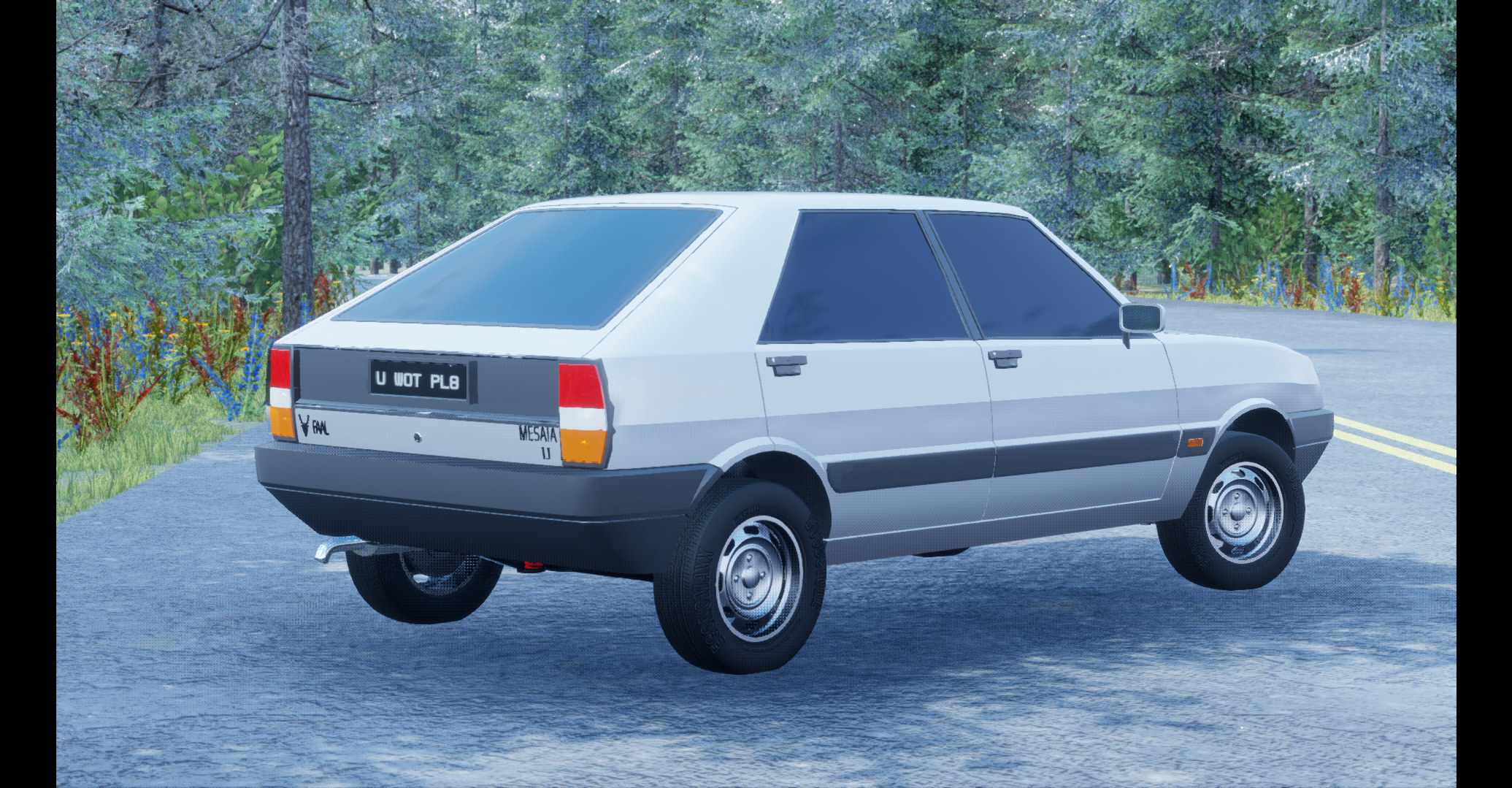
that purpose was defeated by the release of the Mk1 FAAL Dima in 1985. And if the small size and the lightness of the car was pure joy for the owners of GTI versions, ultimately, the Mesaia had to grow up into a full fat C segment compact car.
O, 1988 Tasia concept, l hereby baptize you by plunging you in a good ole cup of realistic, reasonable design.
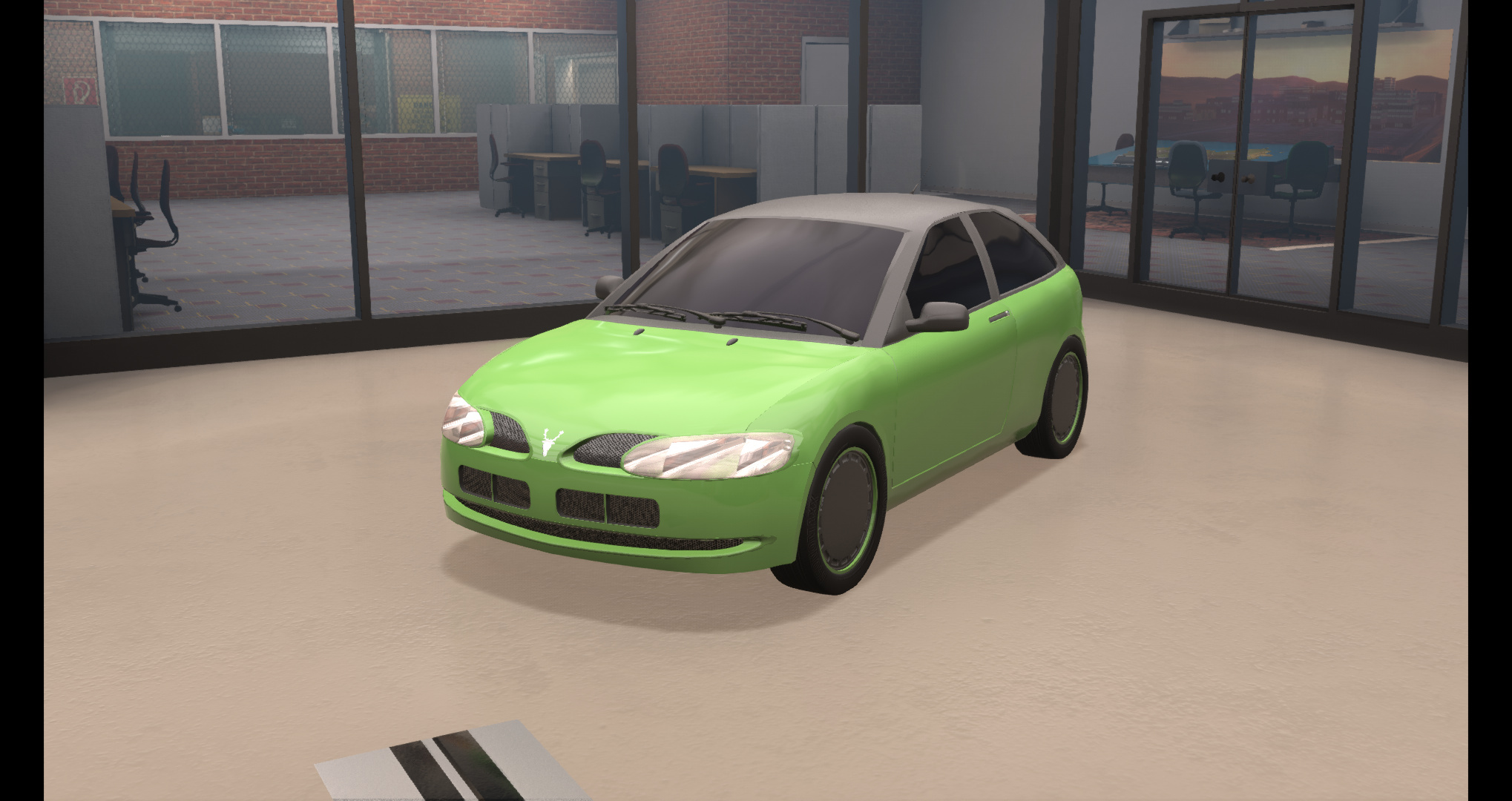
Amen bruh.
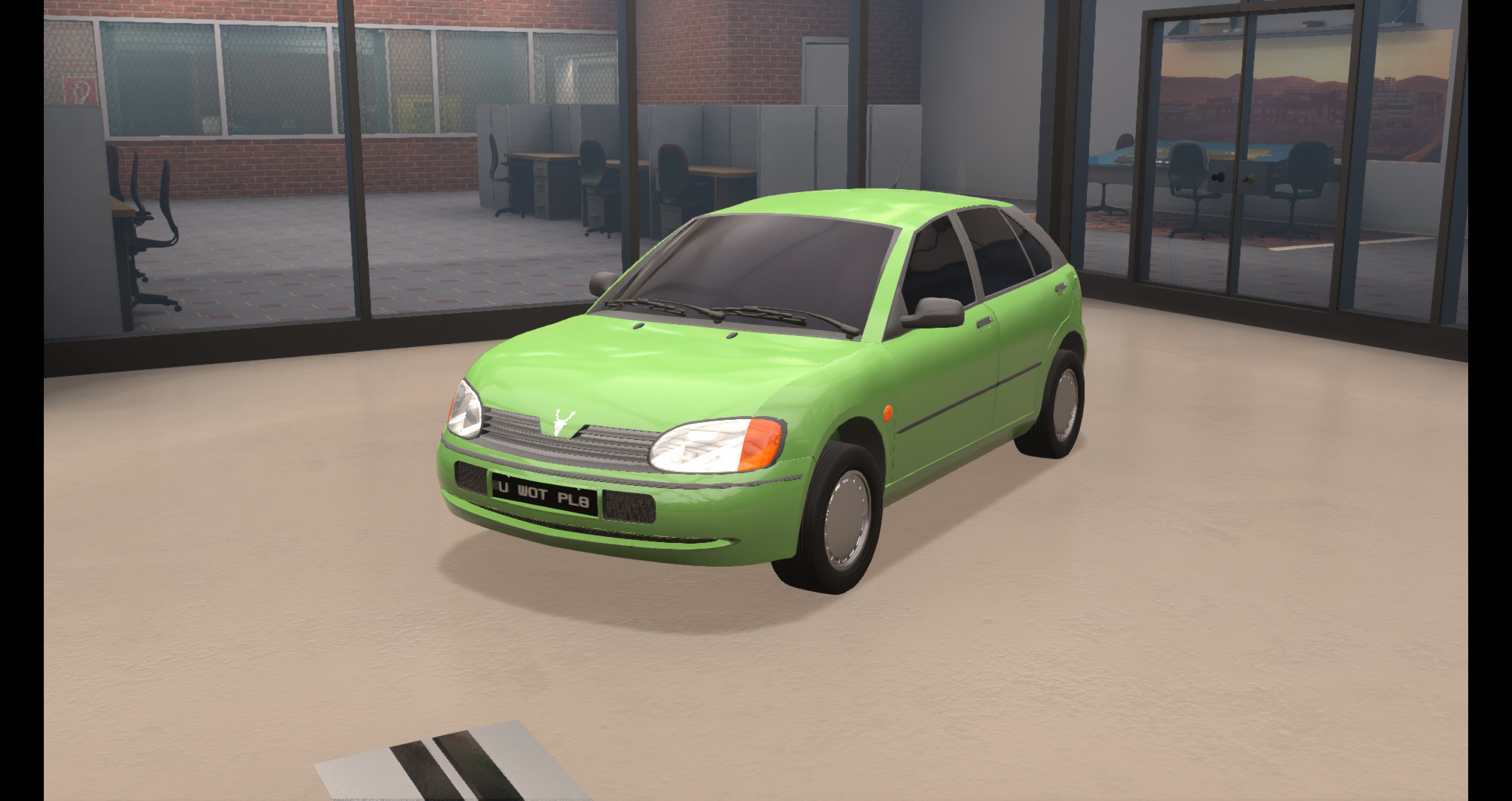
Here is the brand new 1991 FAAL Mesaia IV. It’s… very, very round. But it retains all the design cues of contemporary FAALs. The classic vent wrapped license plate, the V-shaped grille…

… and the blacked out taillight bar.
It retains the general shape of the Tasia concept. The taillights are the same shape but a different design, and everything that’s left from the entirely plastic coated roof are the C-pillars.
FAAL made use of its years of research and development from having the Mk4 Foreia / Mk2 Klinos run on double wishbones all around for 9 years before that, determined to make it last and make use of it: The Mk4 Mesaia is fitted with double wishbone rear suspension! The front is still McPherson, though. A very fancy setup for a not-that-small-anymore car.
Yeah, not that small, as it gained 20cm compared to the previous verison, now at 4.02m long. As it is still made full steel it’s also not that light anymore, ranging from 931kg to 1181kg depending on versions and options.
But where it really shines, though, is in its versatility. The Mesaia is now offered in three or five door hatchback…

… sedan (4.24m)…

… wagon (same)…
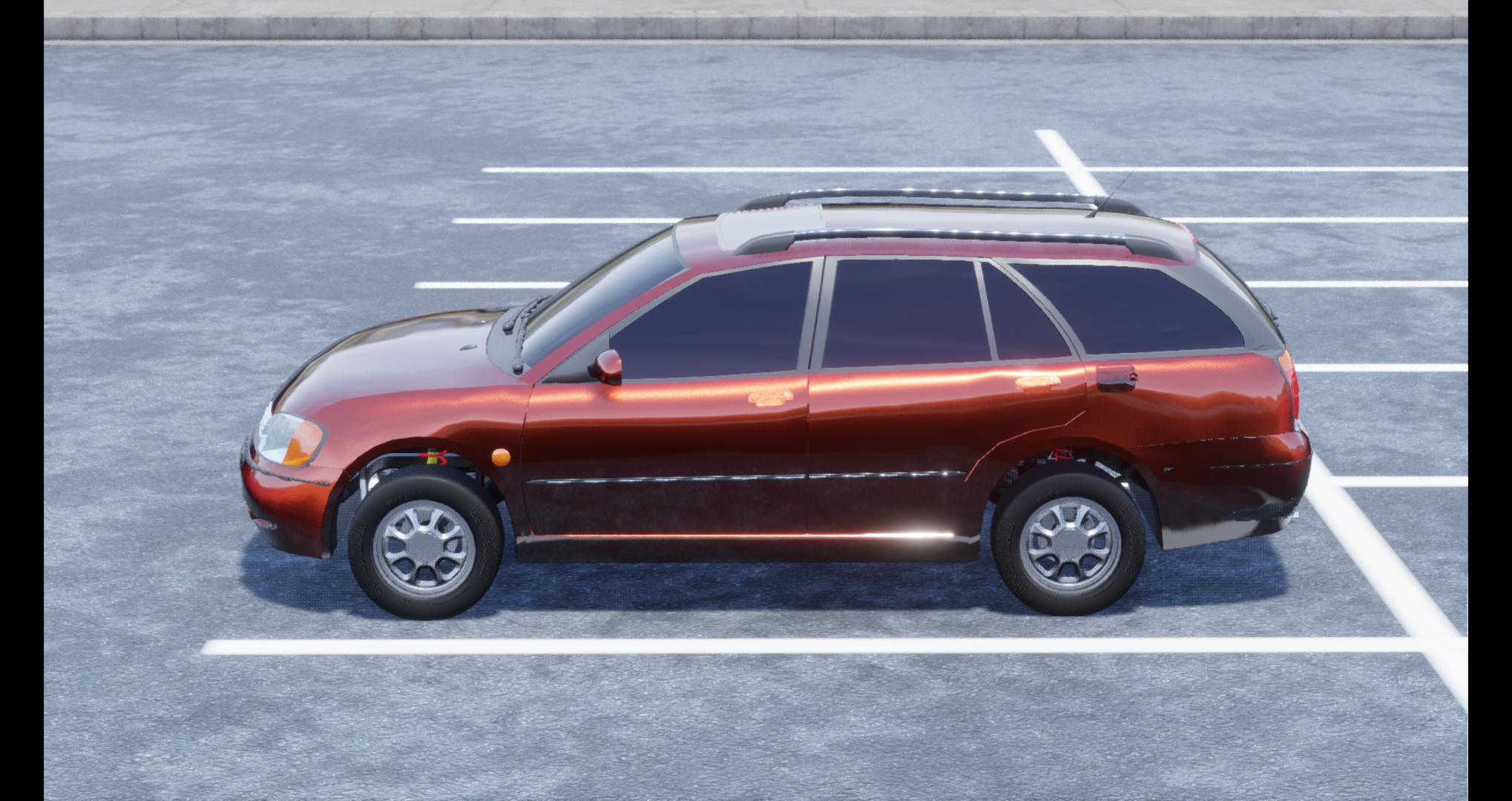
… and even a small convertible variant!

No van variant, unfortunately, though some third party manufacturers did sell company conversion kits for the wagons, without rear seats and with a flat floor and appropriate drivetrain choices.
AND WHAT A TRANSITION BECAUSE speaking of drivetrains, the Mk4 Mesaia was offered with slightly bigger, and definetly more powerful engines than the outgoing Mk3. Because weight, and because constant improvement of competitors. Also, except the base engine, every single powerplant came from the SOHC-4V engine series. Something something today’s performance is tomorrow’s efficience.
Three months later, the already ready diesel engines were added to the lineup:
And two months after that, the one every single FAAL enthusiast was waiting for, the GTI exclusive:
Because of course FAAL wasn’t gonna stop the GTI, after the success of the Mk3 GTI, both 1.6L and 1.8L. Not after the image boost it gave them, and kept giving them after the end of Group B and the fall of the Coupe.

But anyway, the other trims deserve love and exposition too, so:
BL: two speaker cassette radio. Cloth seats. 175/70R13 steel wheels. Unpainted bumpers. 1.3i or 1.9D engines only. Optional airbag, optional power steering. 3 door or 5 door hatch only.
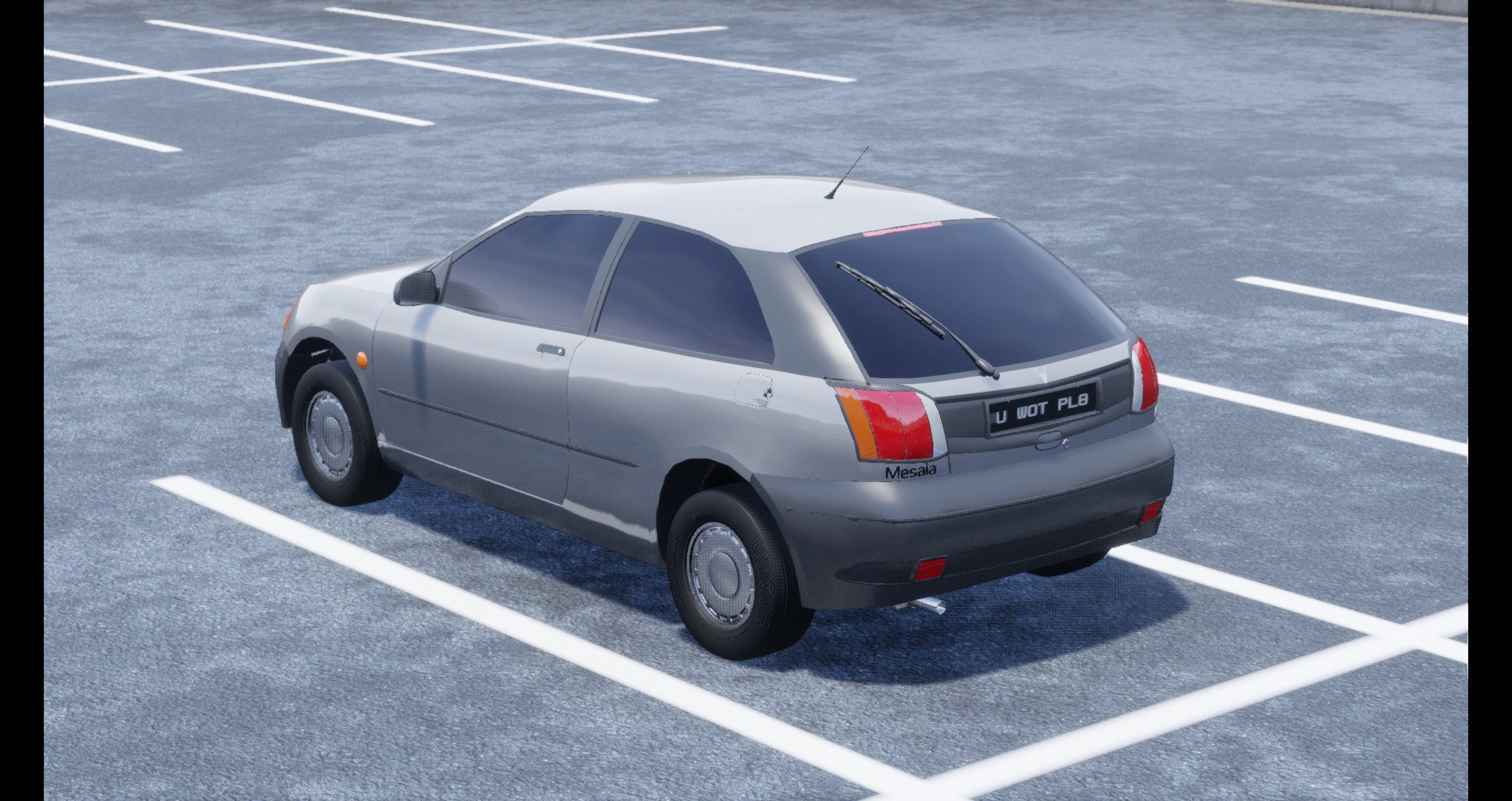
CL: two speaker cassette radio. Soft cloth seats. Standard power steering and ABS. 185/60R14 steel wheels. Painted bumpers. 1.3i, 1.6i, 1.9D or TD engines. Optional airbags, four speaker radio, front power windows, AC, central locking, front foglights, 14" alloy wheels. Available in 3/5dr hatch, wagon and sedan (1.9D unavailable on wagon and sedan)

GL: Four speaker cassette radio. Soft cloth seats. Standard power steering, ABS, airbags, front power windows, AC, central locking. 185/60R14 alloy wheels. Painted bumpers. 1.6i, 1.8i or 1.9TD engines. Optional 8 speaker radio, rear power windows, front foglights, leather seats, heated front seats, power mirrors, sunroof, 15" alloy wheels. Available in 3/5dr hatch, sedan and wagon.

CAB: Four speaker cassette radio. Soft cloth seats. Standard power steering, airbag, front power windows. 185/60R14 alloy wheels. Painted bumpers. 1.8i engine only. Optional AC, heated front seats, leather, 15" wheels, front foglights. Only trim for the Convertible variant.

GTI: Two speaker cassette radio. Half bucket seats. Standard power steering, ABS, front foglights. 195/50R15 alloy wheels. Painted bumpers with aero package. 2.0i VVT engine only. Optional 4 speaker or 8 speaker radio, power windows front and rear, power mirrors, central locking, AC, heated seats, sunroof, airbags. 3/5dr hatch only.
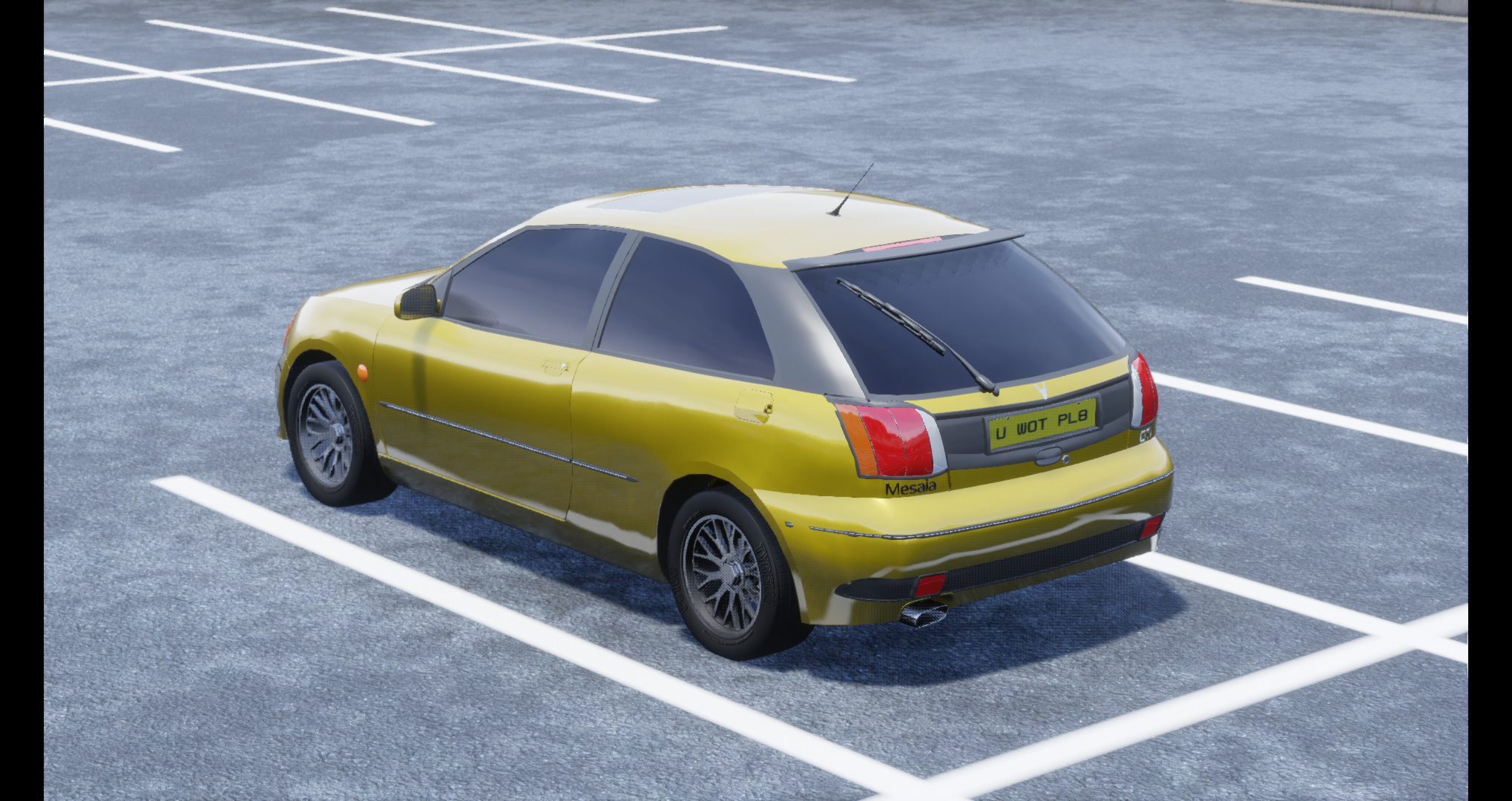
Generally, people had no complaints about the Mk4 Mesaia. Its broad appeal made it sell well, and enthusiasts were glad to see the GTI come back with a performance boost (7s 0-100km/h, 215km/h top speed, 15.2s quarter mile) and a still relatively contained weight (1008kg). The general public, though, considered the GTI a scam. Indeed, most brands at that time offered sport hatchbacks with reasonable performance AND amenities that were standard. The FAAL, though, came bare bones, with a ton of extras that cost money. Then again, most brands didn’t offer their sport hatchbacks with a Torsen front diff, a fully clad underside and double wishbone rear suspensions all standard. FAAL’s priorities were starting to differ from the public’s priorities, and they were going to need to find a solution.
And since the main reason they sold the GTI bare boned wasn’t costs, but rather engine limitations and especially weight, FAAL concentrated their future researches on a new, lighter, more powerful engine for the future of their sports cars.
But two more cars before that. Coming next, the roundening Pt 3: The 1992 Foreia.



